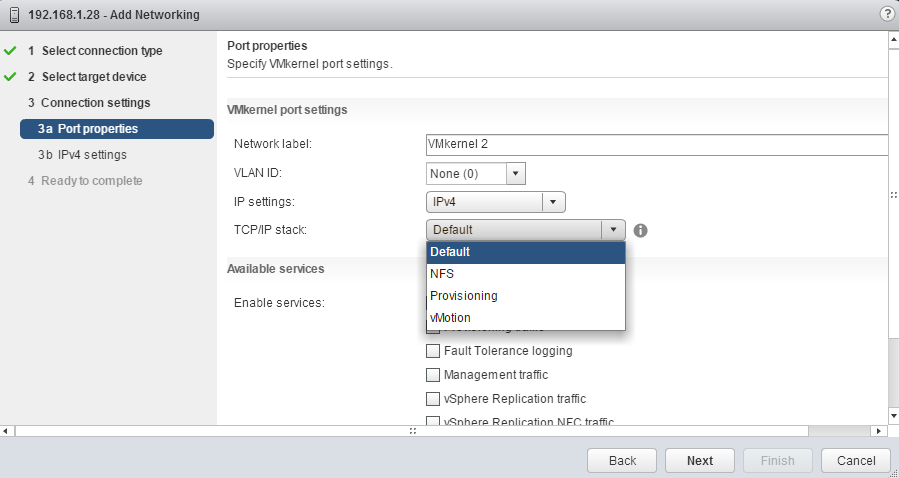Using TCP/IP stacks for VMkernel network traffic provides the following benefits:
- It separates VMkernel routing tables
- It provides a separate set of buffers and sockets
- It isolates traffic types to improve performance and security
Currently, a custom TCP/IP stack cannot be created in the Web Client interface. A custom TCP/IP stack is created by using esxcli on the ESX host, as follows:
ESX1 # esxcli network ip netstack add -N "Name_of_Stack"
The DNS configuration associated with the TCP/IP stack can then be configured. This can automatically be obtained from a VMkernel adapter by using DHCP, or it can be set manually, as shown in the following screenshot:

A VMkernel gateway can be assigned to the TCP/IP stack, as shown in the following screenshot:

Advanced TCP/IP stack settings include the maximum number of connections and the congestion control algorithm to use for the stack.
The TCP/IP stack is assigned to a VMkernel adapter when it is created, as shown in the following screenshot:

